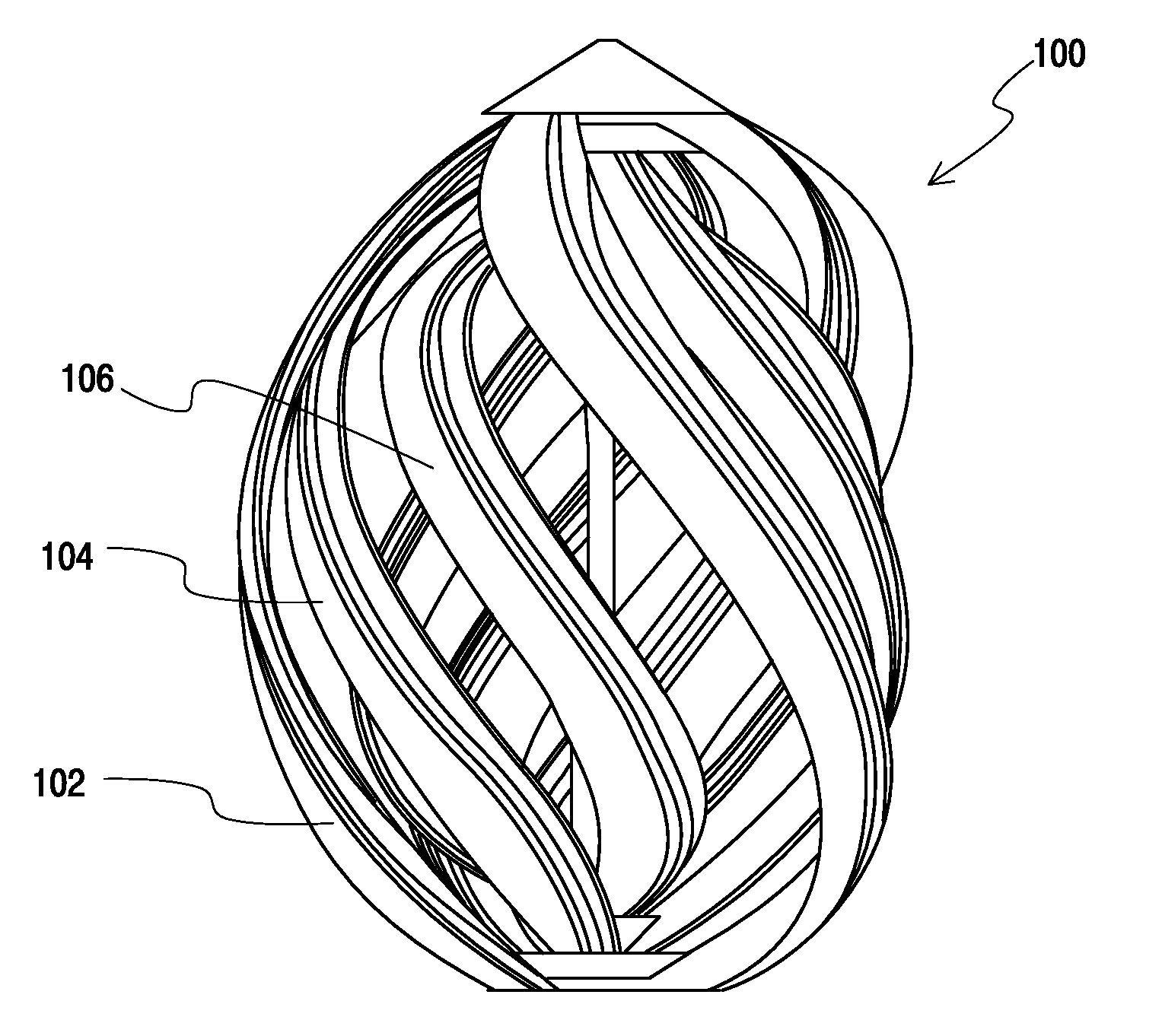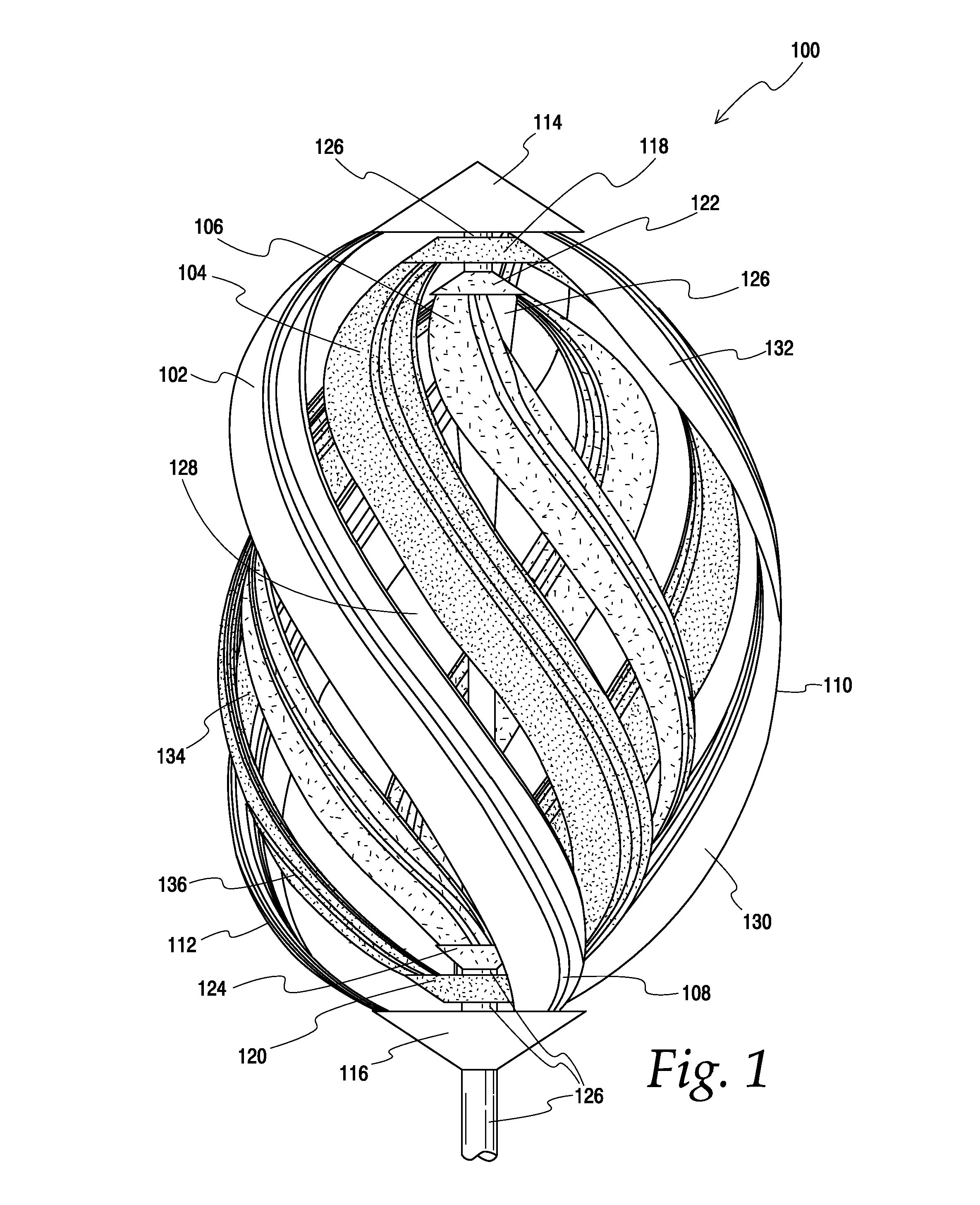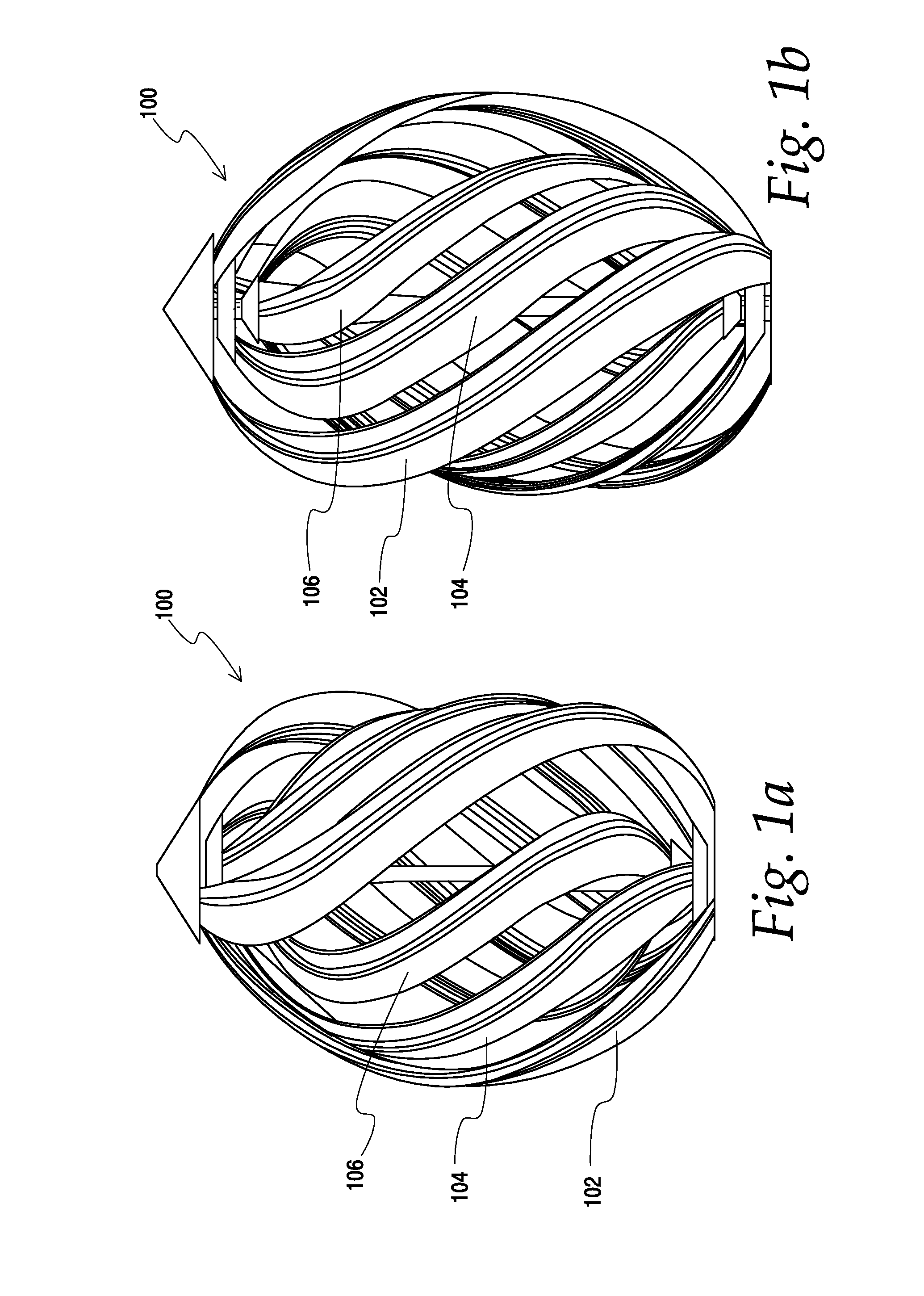Novel turbine and blades
a turbine blade and blade technology, applied in the field of turbines, can solve the problems of harmonic vibration and self-destruction, difficulty in speed regulation, etc., and achieve the effects of improving aerodynamic efficiency, low cut-in speed, and improving electrical power generation
- Summary
- Abstract
- Description
- Claims
- Application Information
AI Technical Summary
Benefits of technology
Problems solved by technology
Method used
Image
Examples
Embodiment Construction
[0041]The following definition should be understood throughout this description and appended claims. A “fluid” refers to either gas or liquid, for example, air or water.
[0042]The embodiments described herein include apparatuses, systems, and methods for electric power generation and turbine manufacture. A variable axis turbine is provided that may generate electric power from wind or water. The turbine may include the nesting of multiple rotors, each with its own blade set. Each rotor and blade set may be configured to separately rotate around the same axis of rotation as the other rotors and blade sets. The nesting of multiple rotor blade sets may produce overall rotational energy in excess of the sum of the energy obtainable from the same blade sets operating at distances spaced from each other.
[0043]The turbine may be self-starting at very low fluid speed. Each blade may have a two-dimensional twist forming a concavo-convex cross-sectional area. As such, each blade may be shaped ...
PUM
 Login to View More
Login to View More Abstract
Description
Claims
Application Information
 Login to View More
Login to View More - R&D
- Intellectual Property
- Life Sciences
- Materials
- Tech Scout
- Unparalleled Data Quality
- Higher Quality Content
- 60% Fewer Hallucinations
Browse by: Latest US Patents, China's latest patents, Technical Efficacy Thesaurus, Application Domain, Technology Topic, Popular Technical Reports.
© 2025 PatSnap. All rights reserved.Legal|Privacy policy|Modern Slavery Act Transparency Statement|Sitemap|About US| Contact US: help@patsnap.com



